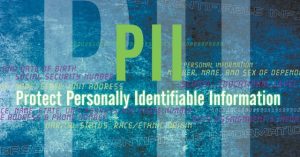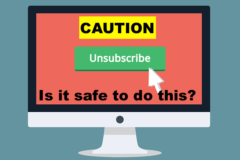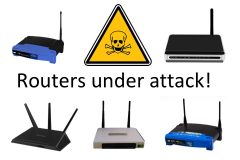How to locate your private and personal information online
 The negligent sharing of personal information by Facebook has brought the sharing of our personal data into the limelight. While this type of information sharing is valuable for sales and marketing purposes, many people don’t realize that there is an even more invasive type of personal information that is easily found online by anyone who looks for it. And it’s completely legal to share this highly invasive personal data! The amount of PII, or Personally Identifiable Information that is being shared without breaking any laws is staggering and extremely frustrating.
The negligent sharing of personal information by Facebook has brought the sharing of our personal data into the limelight. While this type of information sharing is valuable for sales and marketing purposes, many people don’t realize that there is an even more invasive type of personal information that is easily found online by anyone who looks for it. And it’s completely legal to share this highly invasive personal data! The amount of PII, or Personally Identifiable Information that is being shared without breaking any laws is staggering and extremely frustrating.
How to look yourself up online:
- Start by going to Google. Do a search of your name to get a quick overview of what others will see if they look you up online.
- For your second search, enter your first and last name followed by your home address. Click on the results one by one to see which sites are offering your personal information for free or for a fee. Go through every page of your results because some invasive results will not show up on the first few pages of your results.
- Repeat the step above with various spellings of your name, including a maiden and married name, if those apply.
- Look yourself up directly on some directory sites. Do not pay for any reports because you can see enough information for free to get a sense of what they know about you. Here is a handful of directory sites to start with: (add .com to the address when you put it into your address bar.)
- Cubib
- Radaris
- MyRelatives
- Criminalrecords (You will likely appear here even if you don’t have a criminal record)
- MyLife
- Whitepages (see free info and also look at the summary of the premium results)
Now that you see how much of your personal information is online, you are in a position to act on it or to leave it if you are okay with it.
How to remove your personal information yourself
Click here for free information removal tutorials. Start with the most current tutorial and work your way backwards because some sites change their removal process and require updates to the tutorials.
The hardest part of removing information is the follow up required to make sure the sites follow through with their removals.
- When faced with the opportunity to edit your information vs. have it completely removed, always go for complete removal.
- After opting out of a site, do not assume your information has been removed until you go back to that site to make sure it no longer shows up.
- Keep track of what you do so you can follow up.
- Don’t get discouraged and follow up until you get the result you want.
Hire a company to do removals for you but “Buyer Beware!”
There are many unethical companies offering online information removal services. To avoid the frustration of not getting the results you expect, you must take the time to research any company before you hire them. Here are a few things to look out for:
- How are they doing their removals?
- If they have claims about an algorithm or a proprietary technology that does the removals, move on. The process is a highly manual process and most of the sites with personal data on them have safeguards to prevent automated removals.
- Are they seeking out every version and every spelling of your name? Most people will appear on these sites in multiple records and even those with big mistakes usually connect back to detailed accurate personal information.
- Look the company up on review sites.
- Evaluate the reviews carefully because sometimes an unethical person will leave false or negative reviews on a competitor’s site.
- If you see multiple negative reviews plus negative reports filed with the Better Business Bureau, take notice because where there is smoke, there is fire.
- Read FAQS and other detailed or fine print on the website of a service you are considering.
- How many sites will your information be removed from? Will that number be sufficient to give you the level of privacy you require?
- Which sites are excluded?
- What happens with excluded sites?
- What is the warranty period?
- What is the maintenance situation?
- I constantly hear, “my information keeps coming back, but my service removes it.” This is a problem because information that has been properly removed rarely comes back on the same site. That said, it is difficult (but not impossible) to prevent personal information from appearing on a new site in the future.
- Sometimes the very company that shares your information also offers a paid removal service for their site as well as other sites. While this may be okay with you, I personally take issue with this practice. Please do lots of homework before signing up for such a site. I strongly encourage looking for alternative options but the end decision is only yours to make.
If you decide that you prefer to not have your PII online and you take steps to remove it, you must practice good privacy habits or the work you do will be for nothing. Click here to learn how to keep your information offline.
To set up a free phone consultation and/or estimate for a customized removal service, please contact me via this website. (I typically handle these outside of normal working hours so be sure to specify your time zone and the acceptable hours for you to receive a call back.)
Until next time,… Stay Cyber Safe!





thank you
ok thank you and i love this
As always Hayley, thank you for sharing this valuable information. I appreciate your passion and expertise.
Best regards,
Cathy
You’re welcome. And thank you!